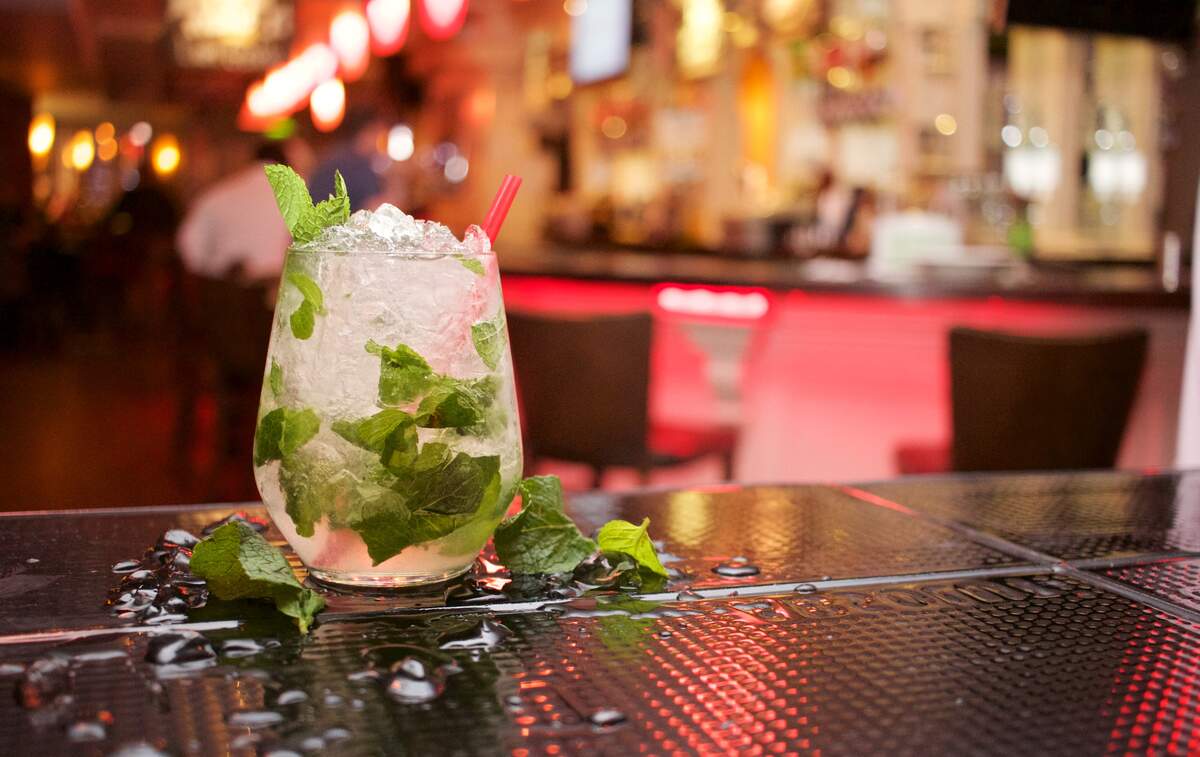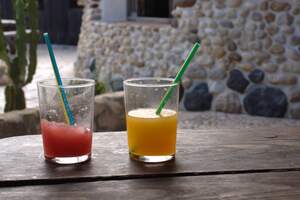

National Mojito Day
Observed
annually on July 11th
Dates
Tags
Drugs & Alcohol
Food & Drink
Hashtags
Sources
https://en.wikipedia.org/wiki/Mojito
https://greenegrape.com/blogs/news/mojito-magic-three-variations-for-national-mojito-day
https://tastecocktails.com/things-mojito-national-mojito-day/
https://www.forbes.com/sites/jeanettehurt/2020/07/11/its-national-mojito-day-but-it-should-be-an-international-holiday/?sh=29562f0d1951
https://www.holidailys.com/single-post/2016/07/11/National-Mojito-Day-Beat-the-heat-with-popular-Cuban-cocktail
https://www.liquor.com/articles/mojito/
The mojito, one of the most popular cocktails in the world, is celebrated today with National Mojito Day. This refreshing summer drink is made with white Cuban rum, lime juice, sugar (sometimes cane sugar juice or sugar syrup), mint sprigs, and soda water. The oils from the bruised mint are released as the mint and sugar are muddled with the lime juice, complementing the rum. Mixed, not shaken, with crushed or cubed ice, the mojito is topped with soda water and garnished with mint sprigs and lime slices.
The precursor to the mojito may have roots in Southeast Asia, where limes and sugar cane originated. It was made of fermented sugar cane and citrus juice and was drunk by the indigenous population. The mojito was first served in Havana, Cuba. There are a number of stories as to how it got its start, but there isn't a consensus as to which is true. Regardless, by the early twentieth century, the famous and well-to-do were vacationing in Cuba and drinking plenty of cocktails, and before long, the mojito was one of them. By the early 1930s, Sloppy Joe's Bar—the same bar associated with the Sloppy Joe sandwich—had mojitos on their menu. A mojito appears in the cocktail book the for El Floridita, another Havana bar, in 1939, and became a favorite of Ernest Hemingway there.
"Mojar" or "mojado" are Spanish words for "wet," and the name "mojito" may be derived from "mojadito," the diminutive form of "mojado," which means "lightly wet." The name could also come from "mojo," which is both an African word for "little spell" and the name for a Cuban sauce or seasoning. There are a number of variations on the mojito beyond the original recipe. There is the Bolivian mojito. A rose mojito uses Lanique, a rose-flavored spirit, while a cojito has the flavor of coconut, and may include coconut-flavored rum. A south side uses gin instead of rum, a dirty mojito uses gold rum instead of white rum, as well as raw or demerara sugar, and a dark mojito uses dark rum instead of white rum. A mojito de toronja has grapefruit added, while a mojito de maracuyá has passion fruit. Strawberries, pears, raspberries, and oranges are sometimes used while making mojitos. Angostura bitters are sometimes added in too.
How to Observe National Mojito Day
Make yourself a mojito! Besides the classic version, you could try a Bolivian mojito, rose mojito, cojito, south side, dirty mojito, or dark mojito. If you don't feel like drinking, make yourself some mojito ice cream or cupcakes. You don't need to stay at home, either. Have a mojito at a bar or cocktail lounge near you, at one of the best bars in the world to have a mojito, or at Sloppy Joe's Bar or El Floridita.





















